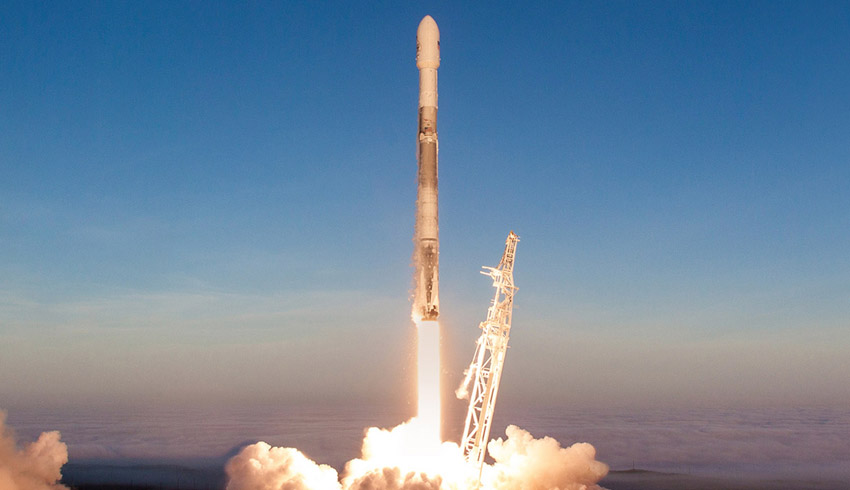On Thursday (17 June), the Falcon 9 will launch the GPS (Global Positioning System) III SVO5 satellite from Space Launch Complex 40 (SLC-40), Cape Canaveral Space Force Station in Florida.
The Falcon 9 is one of SpaceX’s rocket boosters, however, unlike others, the reusability component allows the expensive aspects of the rocket to re-fly, saving roughly $64 million in resource costs.
“In preparation for this first-time event, we’ve worked closely with SpaceX to understand the refurbishment processes and are confident that this rocket is ready for its next flight,” Dr Walter Lauderdale, the deputy mission director of the USSF Space and Missile’s System Center, said on Monday.
“Taken as a whole, our disciplined approach is part of an uncompromising dedication to mission success executed one launch at a time.”
The US Department of Defense has delegated SpaceX with five of the six GPS III satellite contracts, which is estimated at $469.8 million. GPS III SVO2 was the one mission launched by rival United Launch Alliance, a join venture of Boeing and Lockheed Martin.
The previous mission before this was in November when the Falcon 9 was used for the launch of the GPS III SVO4 satellite.
The GPS III SVO5 is compatible with international global navigation satellite systems and will allow users the ability to receive signals from any country’s satellites. This increases chances of accurate signals, no matter where received, according to Everyday Astronaut.
The satellite itself is a medium-Earth orbit constellation and provides coverage for geolocation and time to the world. Currently, there are 31 active satellites in orbit.
NASA beat the USSF to utilising this technology when it flew its first crewed mission earlier this year with a reusable rocket to the International Space Station.
Traditionally, the USSF would use a rocket and discard the booster into the ocean. However, for five years the Space and Missiles Systems Center has been set on using them to “save significant precious tax dollars,” according to Lieutenant General John Thompson, commander of the US Space Force’s Space and Missile Systems Center, last year when the contract was signed.
While most rockets burn out from re-entry into space, SpaceX’s reusable features allow them to withstand not only re-entry but successfully land back on Earth and fly again.
Currently, future GPS III 06, 07, and 08 are undergoing environmental testing at the GPS III Processing Facility in Denver.

Isabella Richards
Bella Richards is a journalist who has written for several local newspapers, her university newspaper and a tech magazine, and completed her Bachelor of Communications (Journalism) at the University of Technology Sydney in 2020. She joined Momentum Media in 2021, and has since written breaking news stories across Space Connect, Australian Aviation and World of Aviation.
You can email Bella on: [email protected]

